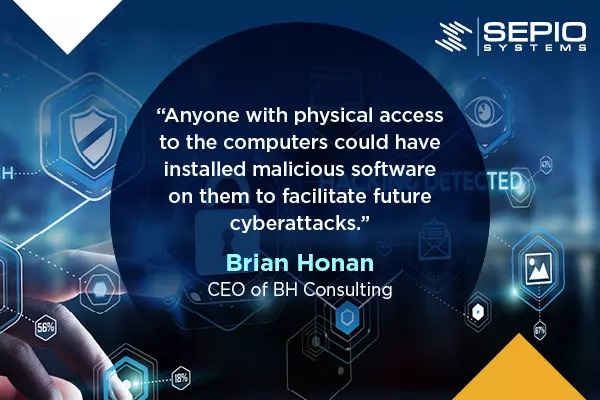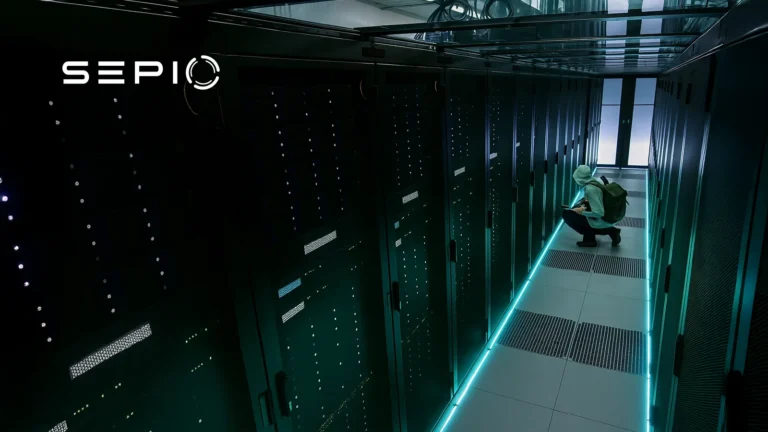Physical security risks are critical concerns in the cybersecurity. If an attacker gains physical access to your computer, it is no longer secure. This emphasizes the significant physical security risks that organizations face. Once an attacker has physical access to a computer or any endpoint device, they can conduct hardware-based attacks, leading to severe consequences for the victim.
While this issue may seem limited to a cybersecurity team’s concerns, it extends beyond that domain. To gain physical access to a device, attackers must first bypass physical security measures. Consequently, the line between physical security and cybersecurity is blurring, with physical security risks on the rise. A recent example is the Capitol riots, serving as a stark reminder of this reality.
The failure to secure the premises adequately allowed hundreds of rioters to access devices and networks used by US government personnel. Amongst that crowd could have been malicious actors looking to exploit such vulnerabilities. Brian Honan, CEO of BH Consulting, stated, “Anyone with physical access to the computers could have installed malicious software on them to facilitate future cyberattacks,” highlighting the dire physical security risks present in such situations.

Criminal Actors Hidden Amongst the Crowds
The Ideal Scenario for Exploiting Physical Security Risks
No matter who the perpetrator is, gaining physical access allows them to carry out a hardware-based attack through the insertion of a Rogue Device. According to Christopher Painter, a former top US cybersecurity official, “there’s a lot more you can do when you have physical proximity to a system”. Many laptops were left unlocked due to the rush to evacuate the Capitol. And the premises, often referred to as “The People’s House”, has many open spaces that are easily accessible once inside.
These factors enable a hardware-based attack as there are fewer obstacles in place and allow a perpetrator to easily attach a Spoofed Peripheral to an endpoint. Additionally, hardware security is often neglected and is not as heavily invested in as software and network security. Thereby it presents further vulnerabilities. Hardware cybersecurity requires complete device visibility, and if devices are not accounted for then it is impossible to protect them. As such, should a protester have planted a Rogue Device on an endpoint, it would be a long process to find it, let alone detect it… And the types of attacks that these devices can carry out have extreme consequences.
Actions and Consequences of Physical Security Risks
Primarily, Rogue Devices allow perpetrators to conduct attacks. These attacks provide access to important data and confidential information, facilitating espionage. Other attacks through Rogue Devices can shut down certain operations. This effort aims to undermine the target and cause damage, amplifying the physical security risks organizations face.
- Advanced Persistent Threat
APTs are an advanced form of a data breach. APTs, which are highly customized and sophisticated, often involve state-sponsored actors with both the capabilities and motives to conduct such attacks.The aim is to gain unauthorized access to secured systems and, with the information obtained, cause damage to the victim. - Man-in-the-Middle
In a MiTM attack, the perpetrator intercepts the communication between two entities without either party knowing. As a result, the malicious actors can obtain sensitive information or credentials that provide access to such information. - Malware Injection
Malware encompasses various types of malicious software. One type of malware, called Rogue Access Trojans (RATs), gives bad actors a backdoor for remote administrative control.With this control, the attacker can take screenshots, monitor behavior through keylogging, and even activate the system’s webcam. As a result, the perpetrator can obtain a vast amount of confidential data, compounding the physical security risks faced by organizations. - Distributed Denial of Service
Malware can recruit bots to form a botnet which work to carry out a DDoS attack. These attacks disrupt the normal traffic of a targeted server, service or network. The botnets do this by overwhelming the target, or its surrounding infrastructure, with a flood of internet traffic which can cause it to shut down.
The consequences of a cyberattack on a government entity are dire. Such attacks pose serious physical security risks that can jeopardize national security. If state secrets fall into the wrong hands, significant harm could result. This harm can occur both directly and indirectly. DDoS attacks on critical infrastructure threaten public safety. These attacks erode trust in government capabilities.
Bridging the Gap Between Physical and Cybersecurity Risks
Cybersecurity can no longer be the sole responsibility of dedicated cybersecurity teams. As physical security risks rise, physical security teams are becoming the first line of defense against cyberattacks. The events at the Capitol exemplify how physical security vulnerabilities can lead to severe breaches. Thus, it’s essential to recognize the growing interdependence between physical and cybersecurity, ensuring robust protective measures are in place.
Unlock the potential of robust cybersecurity measures tailored to your needs. Schedule a demo to see how we can help protect your organization from physical security risks and cyber threats.






